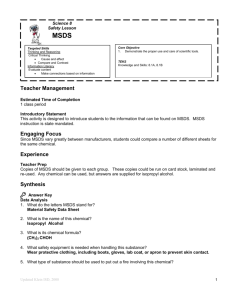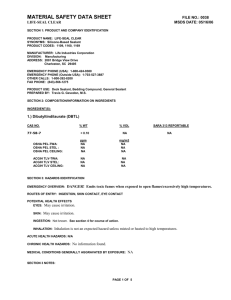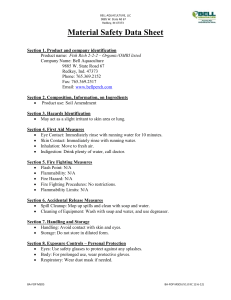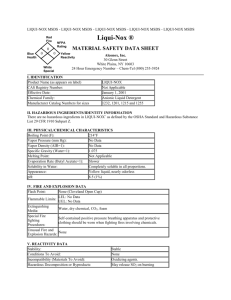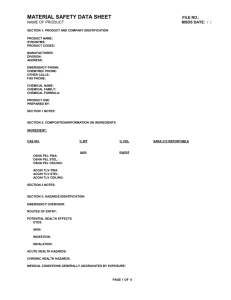MSDS-activity
advertisement
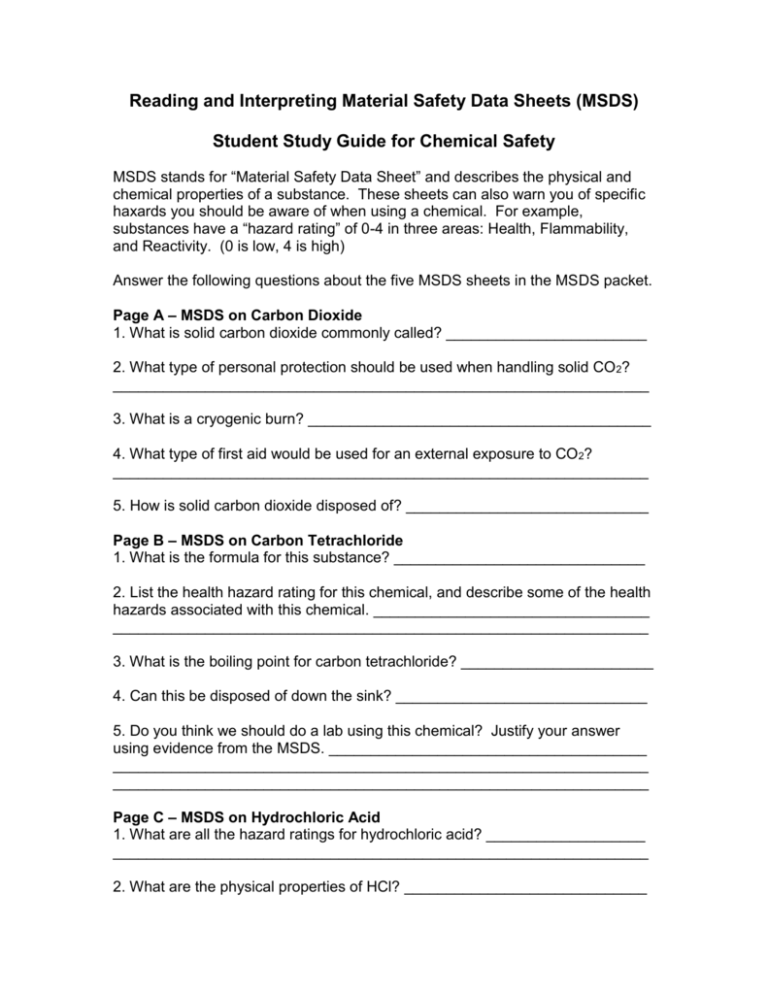
Reading and Interpreting Material Safety Data Sheets (MSDS) Student Study Guide for Chemical Safety MSDS stands for “Material Safety Data Sheet” and describes the physical and chemical properties of a substance. These sheets can also warn you of specific haxards you should be aware of when using a chemical. For example, substances have a “hazard rating” of 0-4 in three areas: Health, Flammability, and Reactivity. (0 is low, 4 is high) Answer the following questions about the five MSDS sheets in the MSDS packet. Page A – MSDS on Carbon Dioxide 1. What is solid carbon dioxide commonly called? ________________________ 2. What type of personal protection should be used when handling solid CO 2? ________________________________________________________________ 3. What is a cryogenic burn? _________________________________________ 4. What type of first aid would be used for an external exposure to CO 2? ________________________________________________________________ 5. How is solid carbon dioxide disposed of? _____________________________ Page B – MSDS on Carbon Tetrachloride 1. What is the formula for this substance? ______________________________ 2. List the health hazard rating for this chemical, and describe some of the health hazards associated with this chemical. _________________________________ ________________________________________________________________ 3. What is the boiling point for carbon tetrachloride? _______________________ 4. Can this be disposed of down the sink? ______________________________ 5. Do you think we should do a lab using this chemical? Justify your answer using evidence from the MSDS. ______________________________________ ________________________________________________________________ ________________________________________________________________ Page C – MSDS on Hydrochloric Acid 1. What are all the hazard ratings for hydrochloric acid? ___________________ ________________________________________________________________ 2. What are the physical properties of HCl? _____________________________ 3. How would you clean up a spill or leak? ______________________________ ________________________________________________________________ 4. What is the solubility of HCl? _______________________________________ 5. What are the acute toxicological effects of HCl? ________________________ Page D – MSDS on Mercury 1. Is mercury a health risk? __________________________________________ 2. What first aid measures should be used if someone bites into and breaks a mercury thermometer? ______________________________________________ ________________________________________________________________ 3. What is the boiling point of mercury? _________________________________ 4. What are the target organs for toxicological damage from mercury? ________________________________________________________________ ________________________________________________________________ 5. What is the formula for mercury? ________ What does it mean that mercury is found in an “elemental” form? ________________________________________ ________________________________________________________________ Page E - MSDS on Sucrose 1. What is another name for sucrose? __________________________________ 2. Is this substance a health risk? _____________________________________ 3. Do you think the first aid measures are appropriate for internal ingestion of sucrose? Use the MSDS and your background knowledge about sucrose to justify your answer. ________________________________________________ ________________________________________________________________ ________________________________________________________________ 4. What is the shelf-life of sucrose? ____________________________________ 5. Is sucrose a chemical to be extremely cautious with? ____________________

